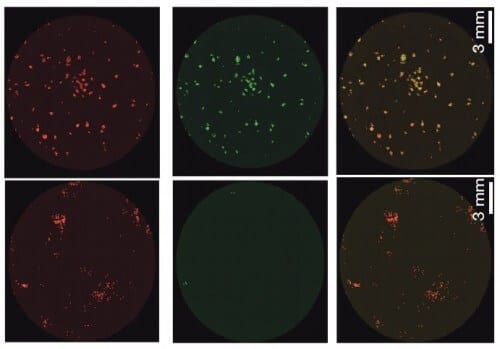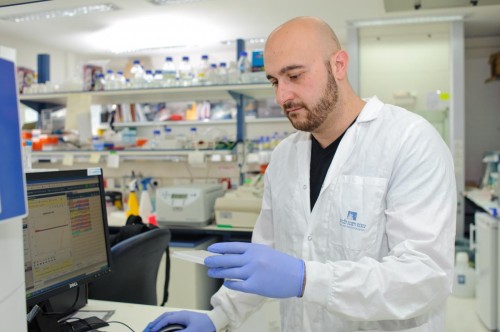A study led by Dr. Yaakov Hana from the Weizmann Institute of Science, published in the scientific journal Nature, reveals the brake that delays the production of stem cells, and improves the efficiency of the process to a considerable extent

Embryonic stem cells carry enormous medical potential. A decisive step towards their use for medical purposes was made when it was discovered that it is possible to create stem cells from adult cells - a discovery that earned its discoverer a Nobel Prize in 2012, but the efficiency of the process remains low. Research led by Dr. Yaakov Hana from the Weizmann Institute of Science, to be published tomorrow (Wednesday) in the scientific journal Nature, reveals the brake that inhibits the production of stem cells, and improves the efficiency of the process considerably. The research findings will facilitate the production of stem cells to treat patients, as well as advance our understanding of the mysterious process in which mature and sorted body cells become stem cells.
Embryonic stem cells have not yet gone through the "specialization" process, and therefore can become any of the body's cells. Thanks to this, they can be used, among other things, to restore damaged tissues, to cure degenerative and autoimmune diseases, and even to grow organs for transplantation. However, the use of embryonic stem cells has been limited due to availability issues and ethical considerations. Significant progress was made a few years ago, when a team of scientists led by Shinya Yamanaka from the University of Tokyo discovered that it is possible to "reprogram" mature cells and turn them into "induced stem cells" (iPSC) by inserting four genes into them. Despite the breakthrough, the implementation of the "reprogramming" process encountered difficulties: it lasted quite a long time - up to four weeks, and at the end only a very small part of the cells - about two percent of them - actually become stem cells.
What is the obstacle - or obstacles - that prevents most cells from successfully going through the "reprogramming" process? In his post-doctoral research, Dr. Hana showed, using mathematical models, that apparently this is a single obstacle. And yet, he is the first to admit that in biology as in biology, experimental proofs must be provided. In the current study, he reveals the identity of that single obstacle, and proves that its removal significantly improves the effectiveness of the reprogramming.
The team of scientists from Dr. Hana's group, which was led by Dr. Noa Bunerstern, Yoah Rais, Assaf Tzviran and Shai Geula, from the Department of Molecular Genetics, focused on a certain protein with an unknown role, called MBP3. This protein is expressed in each and every one of the body's cells, and in all stages of development - a rare phenomenon, because many of the proteins have specific roles, which cause them to be expressed in a certain type of cells, and in the stages of development in which they are required. The team discovered that the total expression of the protein has an exception: it is not found in the cells of the embryo in its earliest three days, that is, immediately after fertilization. These are exactly three days in which the primary fertilized cell divides, producing a pool of versatile embryonic stem cells, from which all the cells of the embryo are formed. Starting from the fourth day, these cells undergo primary differentiation and lose the "multipurpose" feature; At this point the MBP3 protein comes into play.
It appears, then, that it is the absence of MBP3 that enables the formation of stem cells in the embryo. The scientists imitated this situation in a test tube, and "reprogrammed" mature cells that do not produce the protein. The result: within about eight days, all the cells, in a synchronized manner, became stem cells. Dr. Hana compares the four genes discovered by Yamanaka to the "gas pedal" through which the reprogramming process starts, and his own discovery - the protein MBP3 - to a handbrake: the car does indeed drive when the handbrake is lifted, but in a faltering manner. Lowering the handbrake allows a smooth and fast ride.

The new findings will significantly improve the methods for producing induced stem cells to treat patients. In Yamanaka's "reprogramming" process, viruses are used to insert the four genes into adult cells. The medical methods do not use viruses to insert the genes - for plagiarism reasons - and their success rates are even smaller: only one tenth of a percent of the cells become stem cells. Removing MBP3 from the cells improves the efficiency 1000 times - ten percent of the cells become induced stem cells. In addition, shortening the duration of the process from four weeks to eight days, and the fact that all the cells go through it at the same time, will allow scientists for the first time to trace it step by step, and decipher the mechanisms that carry it out. Dr. Hana emphasizes that the source of the achievement is the discovery of a natural course of fetal development. "Scientists trying to investigate the 'reprogramming' process would benefit if they tried to understand how embryonic stem cells are formed in nature," says Dr. Hana. "After all, it is nature that produces them in the best and most efficient way."
Monitoring the reprogramming process for six days. The mature skin cells (marked in red) that undergo "reprogramming" using the method developed by Dr. Hanna (right), all become induced stem cells that express a green fluorescent marker, while only a few cells from those that are "reprogrammed" using the traditional method (left) become stem cells Race

2 תגובות
The gene is called Mbd3
Ten percent to ten percent is 100 times and not 1000 times